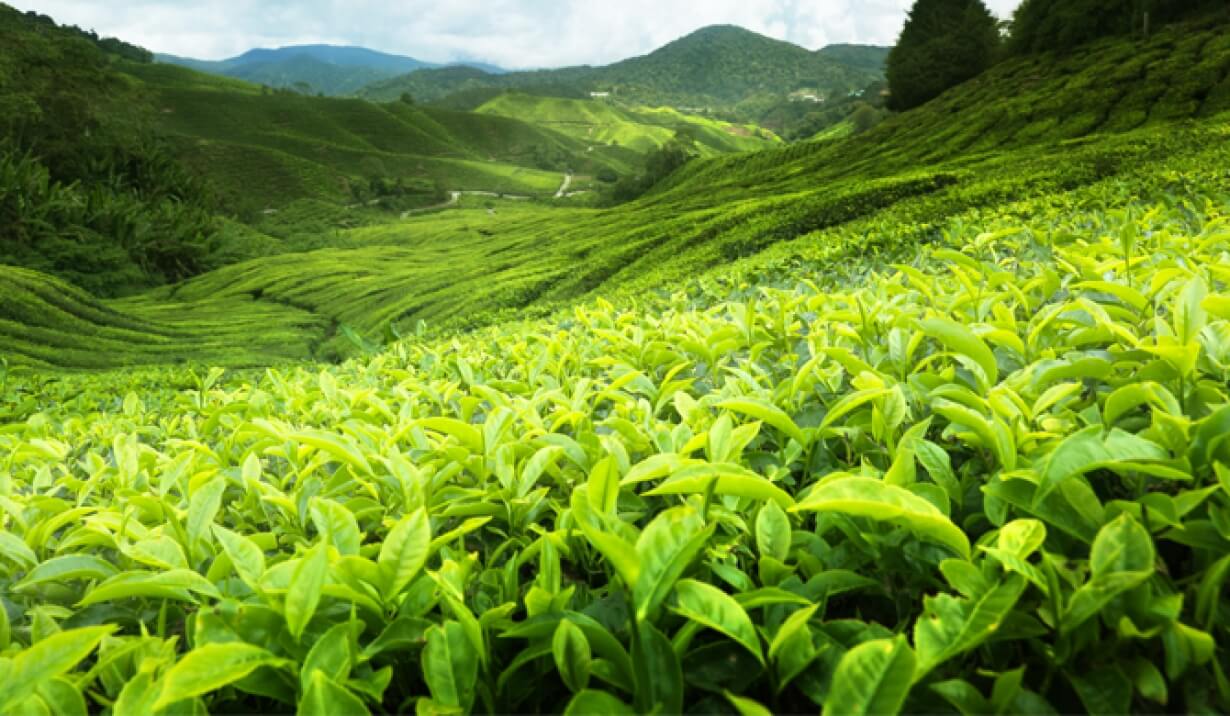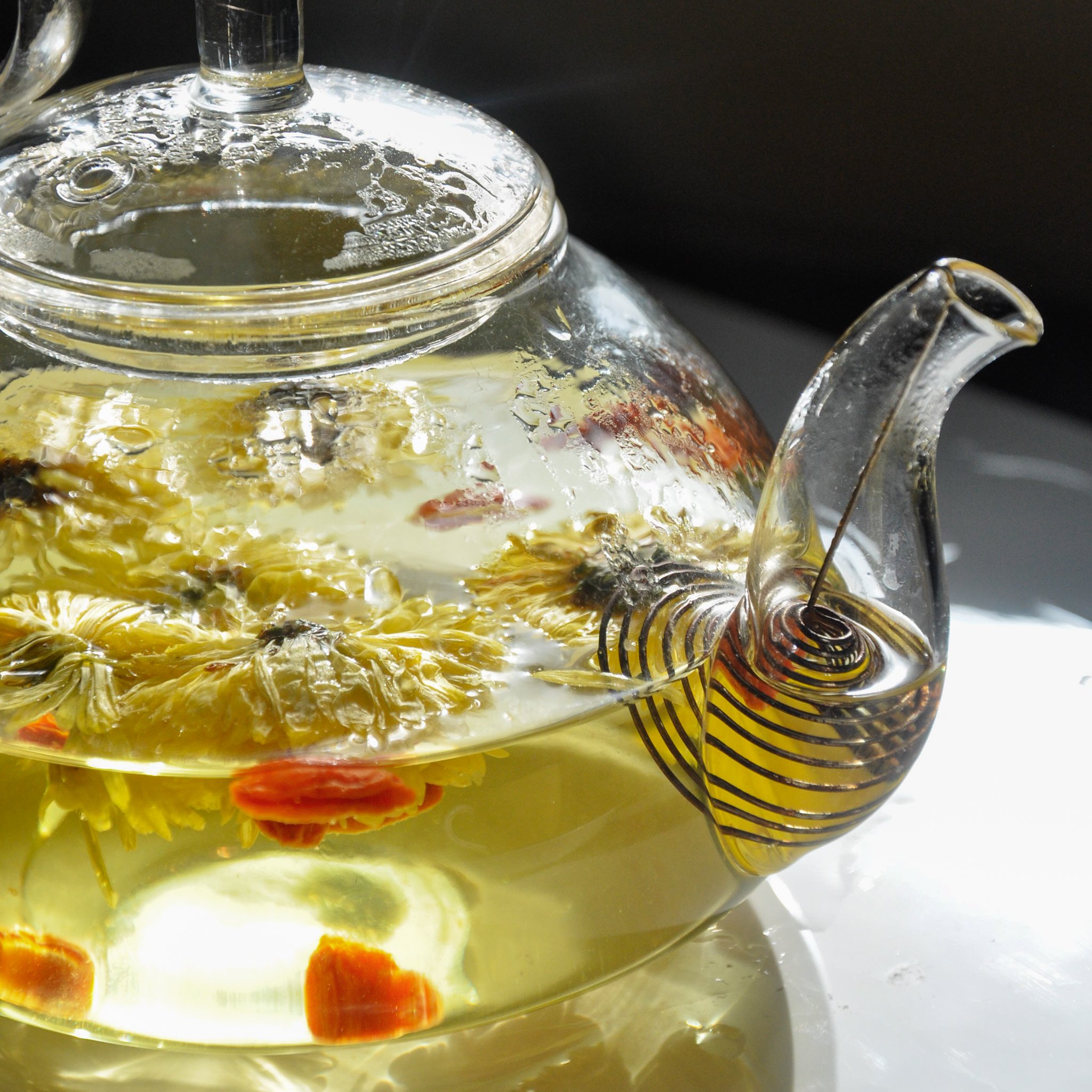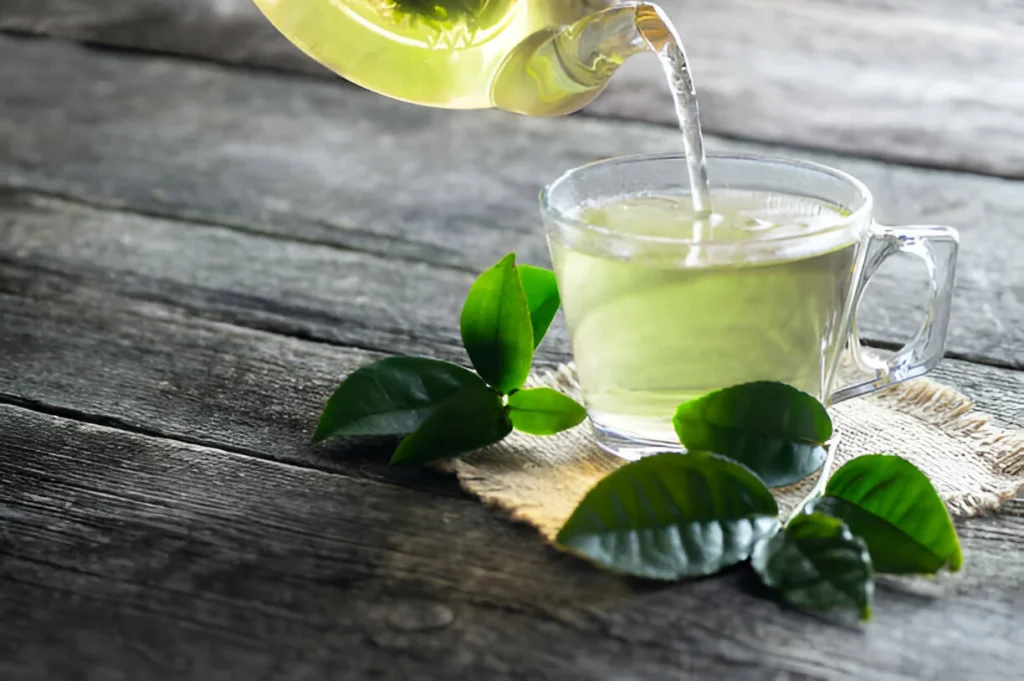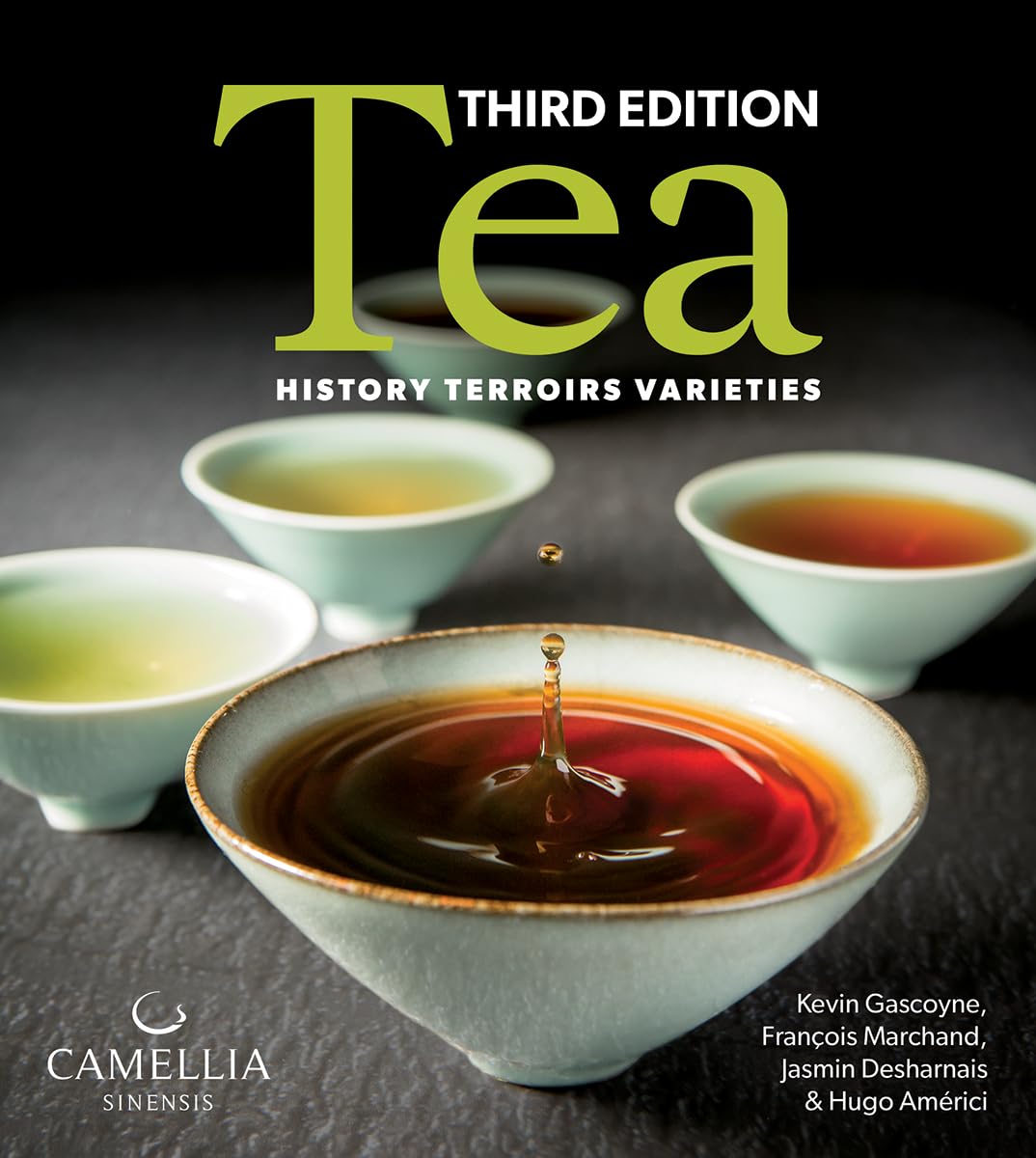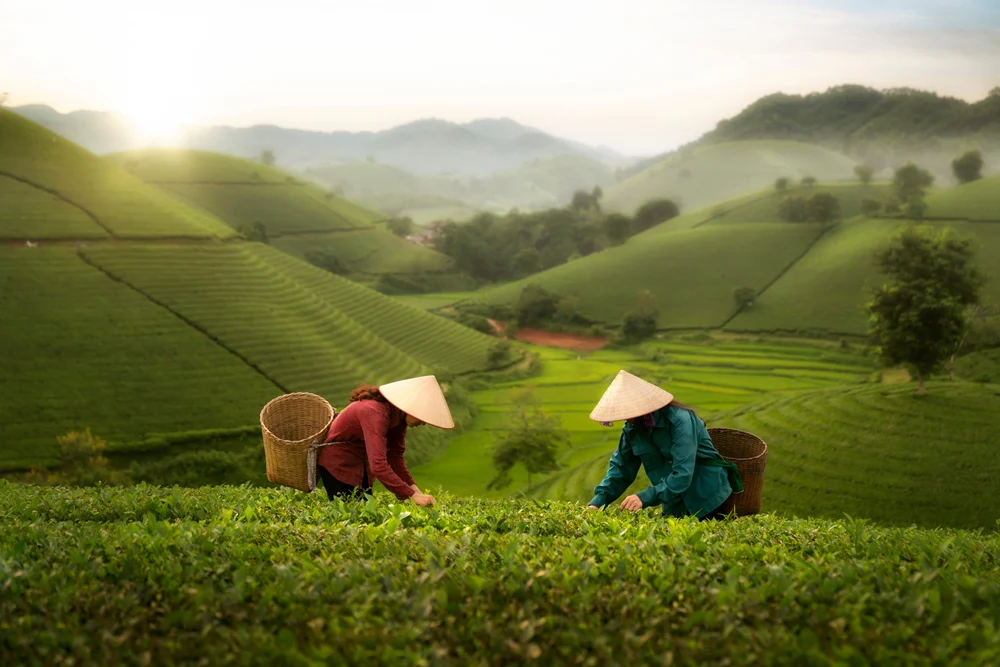Ceylon tea, grown in the lush and diverse terrains of Sri Lanka, has earned a prestigious reputation worldwide. Revered for its unparalleled flavors, captivating aromas, and rich heritage, it stands as one of the finest teas globally. The island’s unique terroir, traditional cultivation techniques, and diverse tea profiles contribute to the magic in every cup. Let’s explore the elements that make Ceylon tea so extraordinary.
1. The Perfect Environment for Tea Cultivation
Sri Lanka’s geography and climate play a pivotal role in shaping the unique characteristics of Ceylon tea. From the sunlit lowlands to the misty highlands, the island’s environment creates ideal conditions for growing tea that boasts distinct and varied flavors.
a. Altitudes and Terroir Diversity
Sri Lanka’s tea-growing regions, including Uva, Dimbula, and Nuwara Eliya, each offer a unique terroir:
- High-Altitude Regions (e.g., Nuwara Eliya): Cooler climates slow plant growth, allowing flavors and aromas to develop fully. These teas are often light, floral, and aromatic.
- Mid-Elevation Regions (e.g., Dimbula): Temperatures are warmer but balanced by periodic rains, producing teas with a fuller body and mild sweetness.
- Lowland Regions (e.g., Ruhuna): These areas produce bold, strong teas, often described as robust and malty.
b. Ideal Humidity and Rainfall
Sri Lanka experiences high humidity levels year-round, ranging from 60% to 90%, which keeps tea leaves hydrated and vibrant. Abundant rainfall, often exceeding 2,000 mm annually in tea regions, nurtures the tea plants and enriches the soil, ensuring the production of top-quality leaves.
c. Soil Richness
The island’s volcanic soil is mineral-rich, contributing to the health of tea plants and enhancing the complexity of the leaves’ flavors. Combined with organic cultivation practices, this creates teas that are both delicious and environmentally friendly.
2. Traditional Cultivation and Processing Techniques
Ceylon tea’s unparalleled quality owes much to the artisanal methods passed down through generations. These time-honored practices, from handpicking to processing, ensure each batch retains its authenticity and exceptional taste.
a. Handpicked Perfection
- The traditional “two leaves and a bud” plucking method is used, where skilled workers select only the youngest, freshest leaves and the tender bud.
- Handpicking ensures that no damaged or overly mature leaves are used, preserving the flavor, aroma, and quality of the final product.
b. Meticulous Processing
Once harvested, the leaves undergo careful processing, which includes:
- Withering: Reduces moisture content to prepare the leaves for rolling.
- Rolling: Releases essential oils, shaping the leaves and unlocking their flavors.
- Oxidation: Determines the type of tea (e.g., black, green, or white) and influences flavor intensity.
- Drying: Locks in the flavors and aromas, ensuring the leaves retain their characteristics.
c. Preserving Tradition
Despite technological advances, many Ceylon tea estates adhere to traditional, labor-intensive methods, emphasizing craftsmanship over mass production. This commitment to heritage ensures that each cup delivers the authentic taste of Sri Lanka.
3. A Spectrum of Flavors
Ceylon tea’s versatility is one of its defining features. The diverse growing conditions across Sri Lanka result in a broad range of flavor profiles, catering to a variety of tastes.
a. Types of Ceylon Tea
- Black Tea: The most renowned, offering bold and robust flavors with a slight citrusy finish.
- Green Tea: Lighter and more delicate, with a refreshing and mildly sweet taste.
- White Tea: The rarest and most exquisite, prized for its smooth, honey-like flavor.
b. Regional Variations
- Nuwara Eliya Teas: Known as the “Champagne of Teas,” these are light, floral, and fragrant.
- Uva Teas: Have a unique woody flavor with subtle hints of spice.
- Ruhuna Teas: Produce dark, strong brews that are bold and malty.
- Dimbula Teas: Balanced and versatile, with a rich body and crisp finish.
c. Blends and Innovations
Ceylon tea producers frequently craft unique blends to highlight specific flavor notes or create distinctive experiences. From spiced chai to fruit-infused green teas, the possibilities are endless.
4. Commitment to Quality and Sustainability
Sri Lanka’s tea industry maintains rigorous standards, ensuring that every cup of Ceylon tea meets global expectations of excellence.
a. Research and Innovation
The government, along with tea estates, invests heavily in research to:
- Improve cultivation techniques.
- Adapt to climate change.
- Enhance pest control and organic farming practices.
b. Stringent Regulations
From plantation to export, Sri Lanka enforces strict quality control measures:
- Only teas grown and processed in Sri Lanka can bear the prestigious “Ceylon Tea” logo.
- Certifications like Fair Trade and Organic ensure ethical production practices.
c. Sustainability Efforts
- Many estates have embraced eco-friendly practices, such as reforestation and water conservation.
- Some producers focus on carbon-neutral operations, making Ceylon tea not only delicious but also environmentally responsible.
5. The Heritage and Legacy of Ceylon Tea
Ceylon tea is more than a beverage—it is a symbol of Sri Lanka’s identity and history. From its colonial origins in the 19th century to its modern global acclaim, the journey of Ceylon tea reflects resilience, innovation, and cultural pride.
a. The Birth of Ceylon Tea
- Introduced by British colonists in the 1860s, tea replaced coffee plantations devastated by disease.
- Pioneers like James Taylor laid the foundation for Sri Lanka’s thriving tea industry.
b. A Global Icon
Today, Sri Lanka is the fourth-largest tea exporter, with its products enjoyed by millions worldwide. The “Ceylon Tea” label signifies authenticity, quality, and a connection to a proud heritage.
Conclusion: A Treasure in Every Cup
Ceylon tea stands apart for its unmatched combination of rich history, diverse flavors, and artisanal quality. From the high peaks of Nuwara Eliya to the lowlands of Ruhuna, every cup tells a story of tradition, innovation, and the dedication of Sri Lanka’s tea industry. Whether you prefer the bold notes of black tea, the gentle sweetness of green tea, or the luxurious smoothness of white tea, Ceylon tea offers something truly special for every palate.
